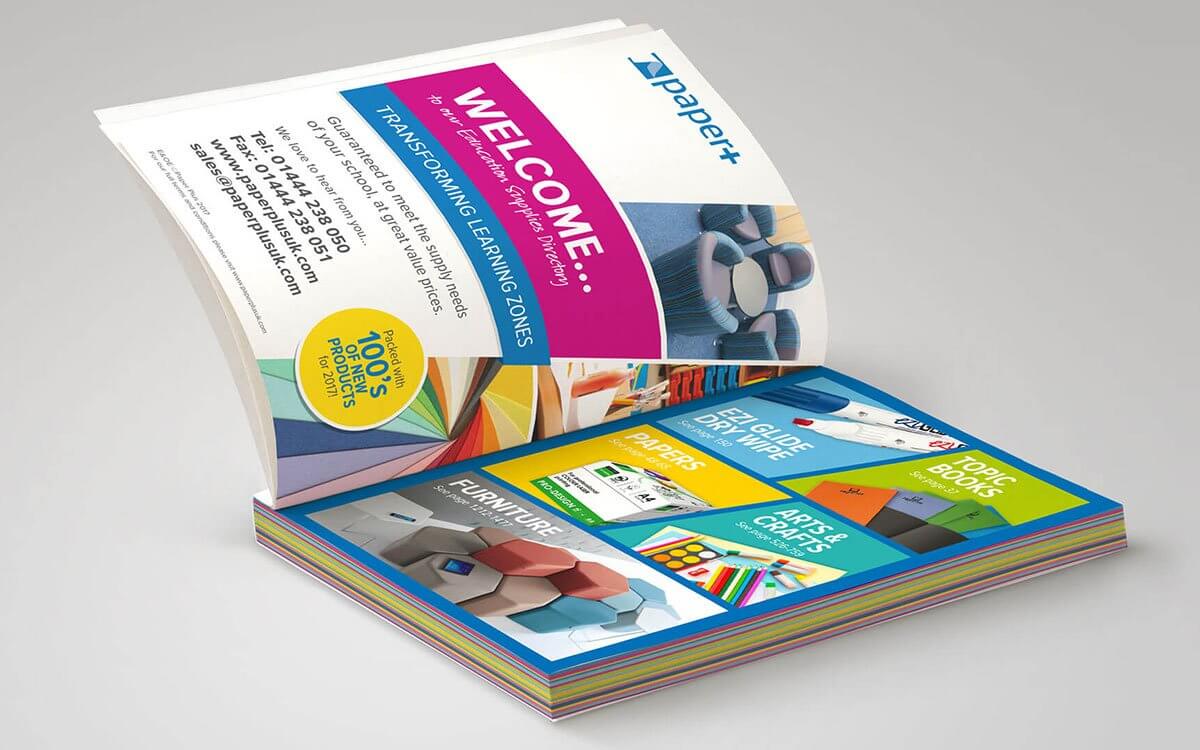What is the difference between uncoated and coated paper?

There’s a huge difference between uncoated and coated paper and it’s important to make the right choices in order to achieve the desired effect with your printed items. The incredible variety of different papers available can seem rather daunting, so we’ve explored and explained some key differences below…
Different manufacturing methods
Paper is made from wood fibres that are soaked in water to soften them. The resulting pulp is then sprayed onto a moving mesh to remove most of the water and passed between heated rollers to dry and smooth the surface.
Uncoated paper, as the name suggests, is simply left in its raw uncoated state. However, with coated paper, white clay is used to fill the tiny crevices on the surface of the sheet which is then passed through high-pressure rollers to achieve a smooth matt, silk or gloss finish. This process uses rollers to compress the fibres which means that a sheet of coated paper will be denser and thinner than an equivalent sheet of uncoated paper made from the same weight of pulp.
Uncoated paper properties
Uncoated paper is typically whiter in colour than coated paper although the difference is usually only noticeable when sheets are held side by side. Uncoated paper has a more tactile feel and various surface textures are available (e.g. laid, wove, linen or contour). It’s also easy to write on and feeds well through office printers so is commonly used for note pads, letterheads, compliment slips, forms and other working documents.
Coated paper properties
Smooth matt, silk or gloss coated paper is often slightly creamy in colour due to the coatings used in the manufacturing process. It is also denser than uncoated paper which makes it more opaque but it is thinner than an uncoated sheet of the same weight. Coated paper is more durable and resistant to dirt, moisture and wear, making it well-suited to printing leaflets, brochures and magazines in full colour.
Different print effects
This is where you need to be careful. Many people assume that colours will look the same whatever they’re printed onto but this is not the case, particularly with litho print. On coated paper, colours and images will look brighter and punchier compared to duller and flatter result when printed onto uncoated paper due to the fact that ink is able to soak into the surface of uncoated substrate. Compare the uncoated (U) and coated (C) colours in a Pantone swatch – the differences can be surprising, particularly with certain colours such as dark blues and bright greens/oranges.
So when you want colourful images on uncoated paper it’s best to enhance and brighten them in Photoshop.
With digital print, it’s a different story. Laser toner is fused to the surface of the paper instead of being absorbed like liquid ink so uncoated paper will usually get better results.
Summary
Ultimately, the choice is yours! Uncoated paper can help to give your marketing literature a more natural, eco-friendly feel but in fact, there is no difference in its environmental impact. With some careful selection and professional design, both paper types can be used to complement your company’s branding and identity.
Still not sure what type of paper to go for? Contact our friendly team 01444 236204 or drop us a line to draw on over 40 years of design and print expertise

